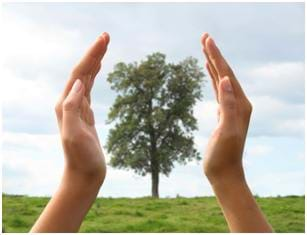
Summary
This unit covers the processes of photosynthesis, extinction, biomimicry and bioremediation. In the first lesson on photosynthesis, students learn how engineers use the natural process of photosynthesis as an exemplary model of a complex yet efficient process for converting solar energy to chemical energy or distributing water throughout a system. In the next lesson on species extinction, students learn that it is happening at an alarming rate. Students discover that the destruction of habitat is the main reason many species are threatened and how engineers are trying to stop this habitat destruction. The third lesson introduces students to the idea of biomimicry—or looking to nature for engineering ideas. And, in the fourth and final lesson, students learn about a specialty branch of engineering called bioremediation—the use of living organisms to aid in the clean up of pollutant spills.Engineering Connection
In today's world, engineers are challenged to design energy-efficient systems for heating buildings and creating fuel-efficient vehicles. The photosynthetic process serves as an excellent model for engineers when imagining highly efficient engineering designs—they study it to aid in their creations.
Engineers can prevent extinction by developing ways to preserve diverse biological habitats. Through their passion for protecting the environment and their use of the engineering design process, engineers have developed creative solutions, such as materials that mimic the qualities of wood to be used instead of rainforest timber, a way to lessen the harmful effects starfish have on coral reef, and ways to lesson global warming, which adversely affects coral reef.
We know that engineers design products that are essential to our health, happiness and safety. To meet these human needs, engineers often look to nature for examples of efficient design solutions and inspiration for creative and elegant design ideas. This approach, called biomimicry, is becoming a commonly used practice throughout the engineering world to aid in the creation of innovative engineering designs.
Bioremediation is a specialtly of the environmental engineering field. It is a commonly used practice that takes advantage living organisms to help rid our environment of toxic or harmful pollutants.
The field of engineering is truly connected to the life sciences and engineers are engaged in many life processes that aid our well being, as these many intriguing examples show.
Educational Standards
Each TeachEngineering lesson or activity is correlated to one or more K-12 science,
technology, engineering or math (STEM) educational standards.
All 100,000+ K-12 STEM standards covered in TeachEngineering are collected, maintained and packaged by the Achievement Standards Network (ASN),
a project of D2L (www.achievementstandards.org).
In the ASN, standards are hierarchically structured: first by source; e.g., by state; within source by type; e.g., science or mathematics;
within type by subtype, then by grade, etc.
Each TeachEngineering lesson or activity is correlated to one or more K-12 science, technology, engineering or math (STEM) educational standards.
All 100,000+ K-12 STEM standards covered in TeachEngineering are collected, maintained and packaged by the Achievement Standards Network (ASN), a project of D2L (www.achievementstandards.org).
In the ASN, standards are hierarchically structured: first by source; e.g., by state; within source by type; e.g., science or mathematics; within type by subtype, then by grade, etc.
See individual lessons and activities for standards alignment.
Subscribe
Get the inside scoop on all things TeachEngineering such as new site features, curriculum updates, video releases, and more by signing up for our newsletter!Unit Schedule
- Day 1: Photosynthesis – Life's Primary Energy Source lesson and Corn for Fuel?! activity
- Day 2-3: Corn for Fuel?! activity
- Day 4: Extinction Prevention via Engineering lesson and News Flash! activity
- Day 5: News Flash! activity
- Day 6: Copycat Engineers lesson and Live like an Animal activity
- Day 7-8: Live like an Animal activity
- Day 9: Design Inspired by Nature activity
- Day 10: Clean It Up! lesson and Sugar Spill! activity
- Day 11: Sugar Spill! activity
More Curriculum Like This

In this lesson, students are asked to consider why extinction is a problem that we should concern us. They are taught that destruction of habitat is the main reason many species are threatened. The lesson explores ways that engineers can help save endangered species.

This lesson covers the process of photosynthesis and the related plant cell functions of transpiration and cellular respiration. Students learn how engineers can view the natural process of photosynthesis as an exemplary model of a complex, yet efficient, process for converting solar energy to chemi...
Copyright
© 2009 by Regents of the University of ColoradoContributors
See individual lessons and activities.Supporting Program
Integrated Teaching and Learning Program, College of Engineering, University of Colorado BoulderAcknowledgements
This digital library content was developed by the Integrated Teaching and Learning Program in the College of Engineering and Applied Science under National Science Foundation GK-12 grant no. 0338326. However, these contents do not necessarily represent the policies of the National Science Foundation, and you should not assume endorsement by the federal government.
Last modified: August 7, 2017





User Comments & Tips